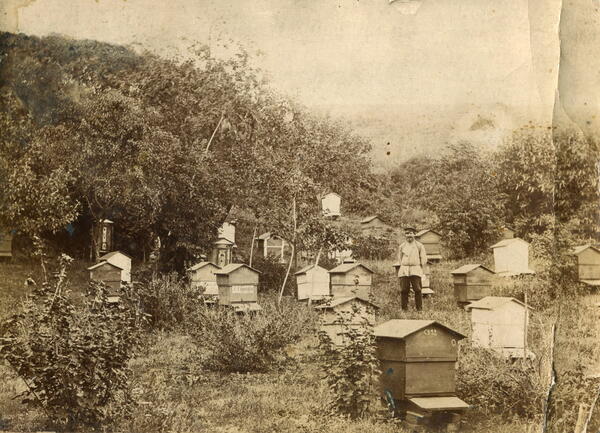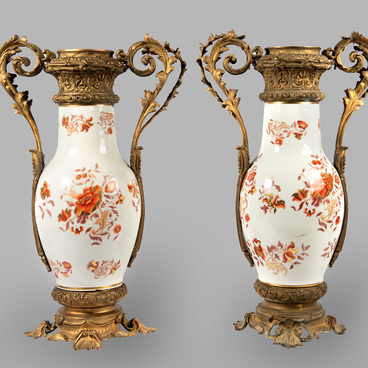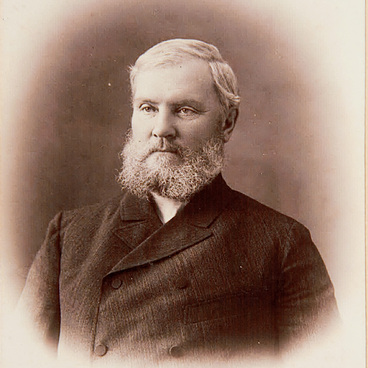At the end of the 19th century, manors of the nobility were transformed into a kind of agricultural complexes, where peasants were engaged in crop growing, cattle breeding and forestry. Bee-keeping was an important part of the estate economy. According to the statistics published in 1901 in the book of P. G. Chefranov “Russian apiculture by the beginning of the 20th century”, there were 328,000 apiaries, or 5, 289,000 bee families in the Russian Empire in the year 1900. Of these, only 13% were kept in frame hives, while the rest were kept in unassembled hives according to old technology (bee-trees, log hives, skeps). The bee-trees and log hives housed the bees inside a hollowed-out tree trunk. A skep is a hive made of wicker or straw, often coated in clay for better insulation. It is depicted on the coat of arms of Tambov and the Tambov region.
Initially, beekeeping originated as wild-honey farming, i.e. collecting honey and wax from wild bees. Later, bees began to be kept in apiaries. Many estates at that time had their own apiaries. Apiculture on the landowners’ estates was not very different from that on the peasants’ ones, but the apiaries of the first were, of course, better organized, because the landlords had more money to maintain them. The care of the apiary was entrusted to a professional beekeeper, whose diligence and conscientiousness determined both the condition of the apiary and the level of income from it.
The Boratynskys’ apiary in Ilyinovka in the late 19th and early 20th centuries was managed by Mikhail Nesterovich Zaveryachev, an uncle of M. A. Zaveryachev, the manager of the estate. The photo shows that the apiary on the Boratynskys’ estate was state-of-the-art for its time: most of the hives are of modern design, with frames; there are only a few log hives in the apiary.
The system of log hive beekeeping survived in Russia until the 20th century. The world’s first collapsible frame hive was invented by our compatriot P. I. Prokopovich in January 1814. But, despite its ease of use, the frame beehive was introduced in apiaries very slowly in Russia. Even in 1910, almost a hundred years after the invention of the frame hive, only 35% of almost 6 million bee families in Russia were kept in such hives.
Initially, beekeeping originated as wild-honey farming, i.e. collecting honey and wax from wild bees. Later, bees began to be kept in apiaries. Many estates at that time had their own apiaries. Apiculture on the landowners’ estates was not very different from that on the peasants’ ones, but the apiaries of the first were, of course, better organized, because the landlords had more money to maintain them. The care of the apiary was entrusted to a professional beekeeper, whose diligence and conscientiousness determined both the condition of the apiary and the level of income from it.
The Boratynskys’ apiary in Ilyinovka in the late 19th and early 20th centuries was managed by Mikhail Nesterovich Zaveryachev, an uncle of M. A. Zaveryachev, the manager of the estate. The photo shows that the apiary on the Boratynskys’ estate was state-of-the-art for its time: most of the hives are of modern design, with frames; there are only a few log hives in the apiary.
The system of log hive beekeeping survived in Russia until the 20th century. The world’s first collapsible frame hive was invented by our compatriot P. I. Prokopovich in January 1814. But, despite its ease of use, the frame beehive was introduced in apiaries very slowly in Russia. Even in 1910, almost a hundred years after the invention of the frame hive, only 35% of almost 6 million bee families in Russia were kept in such hives.




